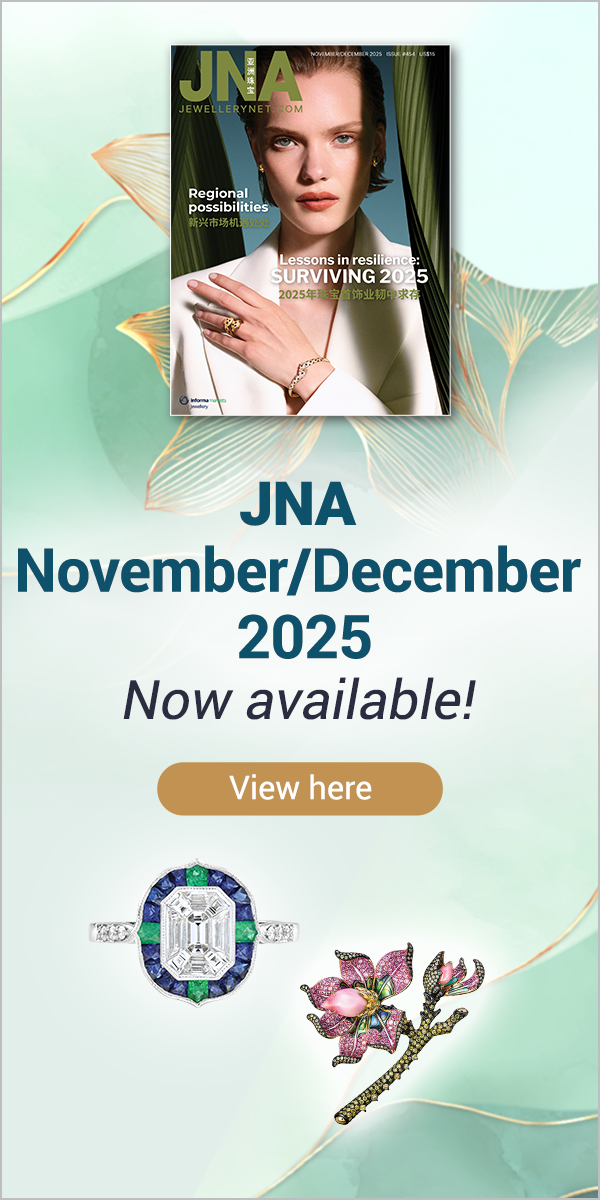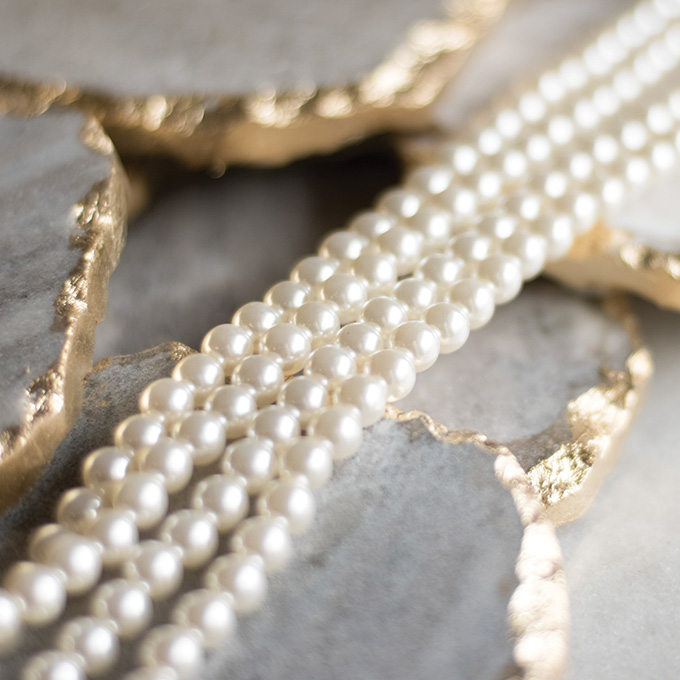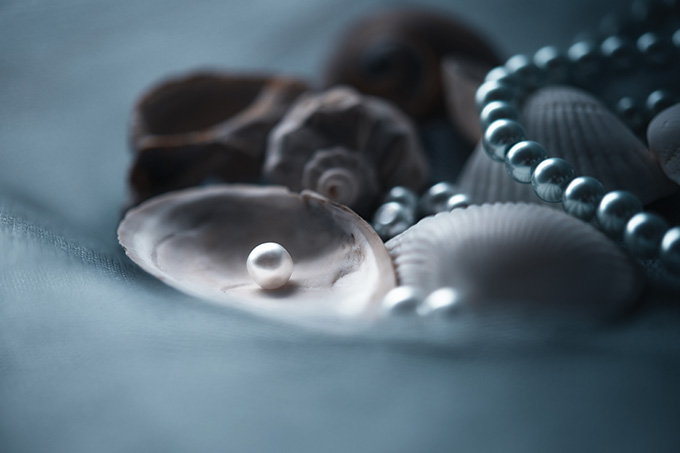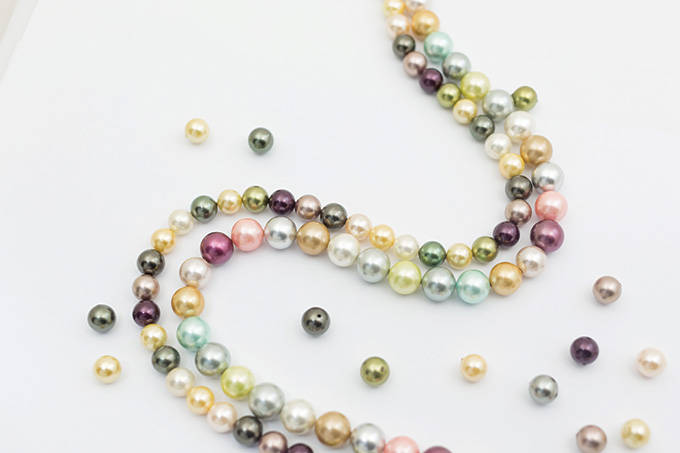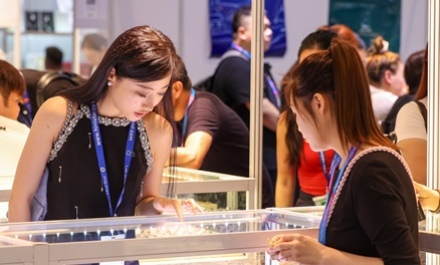Pearls are uniquely positioned to herald the next era in the jewellery trade – one that bridges the worlds of luxury and environmental regeneration.
This article first appeared in the Pearl Report 2025-2026.
Unprecedented political and economic woes in 2025 affected many industries across the globe, but there were a few that proved their mettle. Cleverly adapting to a changing business landscape, the pearl sector not only survived but thrived further, buoyed by sales from emerging markets and heightened consumer demand for meaningful purchases.
Southeast Asia is a key growth driver, with buyers choosing jewellery pieces that meet their meticulous criteria: Luxurious, sustainable and versatile. And pearls tick all the boxes.
Lustrous white and golden South Sea pearls continue to enjoy solid global demand while smaller but equally stunning Japanese Akoya pearls find favour among younger, discerning customers.
Jewellery designs are evolving too. What used to be known as “your grandmother’s pearls” are getting exciting, often rebellious, upgrades. Think pearl brooches as belt accents or buckles, pearl body chains and NFC-embedded pearls that store digital mementos, to name a few.
With pearls rising in popularity, pearl companies both have a duty and a responsibility to ensure steady supply while protecting, preserving and nurturing the environment where these gems are formed.
Industry leaders are carrying out innovative strategies at the farms – from safeguarding oyster survival to investing heavily in colour and quality improvement and maintaining genetic diversity to grow healthier farmed shellfish.
Every road leads to fostering a culture of resilience, restoration and regeneration beyond sustainability in the pearl trade.
Stable market
The pearl industry witnessed periods of macro challenges at the beginning of 2025, led by ongoing conflicts, US tariffs and economic instability. Bucking the downward trend, the South Sea pearl trade maintained robust sales, defying market expectations.
Jacques Christophe Branellec, CEO of Philippines-based Jewelmer, said several key factors led by demand from Southeast Asian markets are driving growth in the golden South Sea pearl sector.
“This region’s expanding markets are seeing an increasing demand for luxury goods that demonstrate exceptional craftsmanship and meaning,” noted Branellec.
Terence Lee, director of Hong Kong-based Rio Pearl, agreed. White South Sea pearls continue to perform strongly in Southeast Asia as well as Japan and China, based on Rio Pearl’s auction results. The fastest-moving pearls include top-tier, clean and round white and golden South Sea pearls, fuelled by demand from premium buyers. Lee also noticed growing appetite for modern shapes such as baroque and Keshi pearls.
Amid headwinds in the luxury goods market, the pearl sector resorted to adaptability and strategic marketing to support growth.
Branellec remarked that e-commerce and digital platforms, social media in particular, are vital to reaching a wider client base and introducing younger buyers to Jewelmer and the world of South Sea pearls.
Meanwhile, prices of South Sea, Tahitian and Akoya pearls have since stabilised, transitioning from a period of extraordinary volatility in 2022 and 2023 due to robust Chinese demand to a steadier environment in 2025.
According to George Kakuda, president of the Japan Pearl Exporters’ Association (JPEA), other markets, the US included, could start buying pearls again as prices become more accessible.
He also cited changes in consumer preferences, with smaller, more affordable but top-quality Japanese Akoya pearls gaining in popularity. Kakuda explained, “Consumers refuse to compromise on quality, so they opt for smaller sizes or different shapes, which do not affect quality.”
Even South Sea and Tahitian pearl traders are seeing rising demand for smaller but fine-quality pearls.
For South Sea pearls, “baby sizes” of 8mm by 10mm in diameter bearing superb colour and lustre are popular while pearls in semi-round, short-oval or button shapes are gradually gaining a spot in the limelight, shared Kakuda.
Gems of ingenuity
Pearl jewellery designs are becoming more inventive with a focus on the gem’s versatile attributes. European pearl specialist Gellner, for instance, is proving that pearls are anything but traditional.
The company’s Wave Ring in platinum adorned with an intense icy blue Marutea pearl and 68 brilliant-cut diamonds won Fine Jewelry of the Year at the Inhorgenta Award 2025, reinforcing the pearl’s modern luxury status.
Gellner also unveiled Salt ‘N Pepper, a new collection of Tahitian and Akoya pearls in darker, more vivid hues interspersed with grey-white diamonds.
“The collection was well received,” explained Jörg Gellner, founder of his eponymous brand. “We focused on platinum in 2025, which was a sound choice, especially with high gold prices.”
The pearl sector remained resilient in the first half of 2025 despite global economic uncertainties, Jörg said. The company, which serves a predominantly European clientele, identified a clear pricing sweet spot.
“Buyers are okay with spending €10,000 (around US$11,700) at retail,” he revealed. “But beyond that, they will think twice. Notably, there is increased activity in the €5,000 to €10,000 (approximately US$5,800 to US$11,700) range, suggesting consumers still desire luxury but are making more calculated purchasing decisions.”
Innovative designs are gaining traction while classic pearl strands – which continue to see solid demand – are no longer the driving force behind sales. Major luxury houses like Tiffany and Boucheron, to name a few, are also fuelling this pearl renaissance with pearl-centric designs, thereby securing the gem’s place in contemporary luxury circles for years to come, added Jörg.
Relevant and reformative
Jewelmer’s pearl cultivation research and development are focused on ensuring the survival rates of young oysters since environmental changes like rising ocean temperatures are affecting oyster mortality.
The company carefully monitors its hatchery practices and undertakes selective breeding to nurture young oysters and identify the more resilient strains. Interestingly, some oysters can naturally adapt to changing conditions by adjusting their physiology.
“The traits of these resilient oysters are exciting glimpses into what may define the future of pearl farming,” shared Jewelmer’s Branellec. Breeding oysters in protected environments and not in the wild likewise helps improve water quality while restoring marine habitats.
Its non-profit organisation, the Save Palawan Seas Foundation (SPSF), meanwhile, implements livelihood projects around coastal communities in Palawan, where Jewelmer’s pearl farms are located.
“Sustainability will continue to shape the future of luxury, and pearls, born in harmony with nature and cultivated through regenerative farming practices, are perfectly positioned to embody this movement,” noted Branellec.
Lee of Rio Pearl remarked that pearls mirror the environment where they are grown.
“Cultivating the best pearls require maintaining a healthy environment,” stated the company official. “Our farms have been around for 15 years as solid proof of our efforts to protect and restore the ecosystem.”
Further testament to this is continuous improvements in the quality and colour of its pearls, added Lee. Rio Pearl also provides housing, and employment and educational opportunities to communities in its pearl farms.
JPEA’s Kakuda said catching the attention of new markets hinges upon communicating the regenerative aspect of pearls.
Creating a truly sustainable society requires approaches that restore and revitalise the natural world. This shift from “net zero” (reducing harm) to “net positive” (actively improving conditions) creates new opportunities for cultured pearls.
Japan’s pearl farms contribute to regeneration efforts through initiatives like recycling discarded fishing gear into new equipment alongside research on carbon sequestration by Akoya oysters and environmental impact assessment of pearl farms.
Kakuda said maintaining genetic variety in Akoya oysters is crucial to developing resilience to environmental changes and diseases, but current artificial seed collection methods using a few parent shells may be diluting diversity.
A Japanese study on the genome of Akoya pearl oysters earlier revealed that genetic heterogeneity creates healthier oysters with stronger immunity, enabling farmers to assess inbreeding levels and select breeding parents more effectively.
The “Akoya oyster reference genome” established in 2022 now enables quantitative analysis of genetic diversity, with the Mikimoto Laboratory providing genome analysis to farming operators to monitor diversity and improve seed collection planning, ultimately reducing mortality risks, shared Kakuda.



